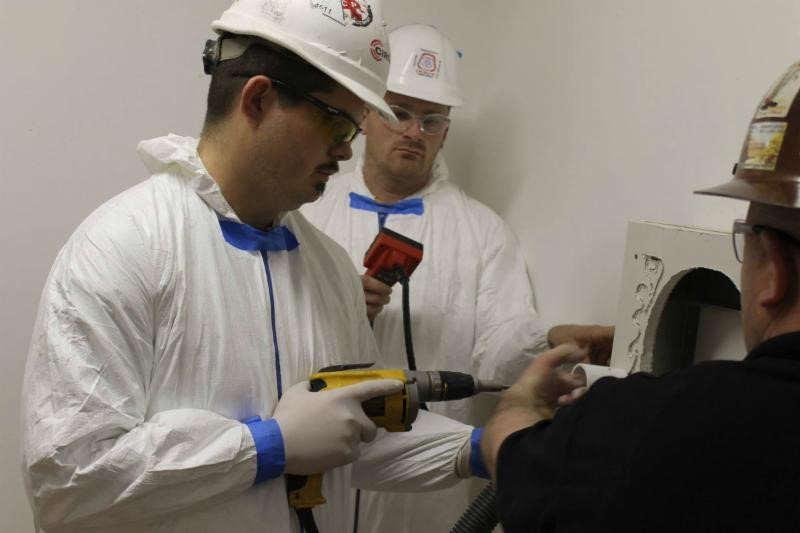IKORCC “Pinpoints” what it means to have dedication with annual pin banquet
As an annual tradition, members of the Carpenters Local #1485 of LaPorte, Indiana gathered at Blue Chip Casino to recognize years of service, leadership, and economic accomplishments.
“I like this event because it is a chance for us to come together to honor our members and their service to our union and to our brotherhood. It shows what this union means to our members and it gives them a chance to come and share with each other one night a year,” said President John Carr.
Following dinner and music, guests were treated to a presentation given by Carr on payroll fraud as well as apprenticeship.
Payroll fraud is prevalent in the wood framing and drywall industry, creating upwards of a 30% disadvantage to law abiding contractors. According to Carr, Indiana is losing more than $150 million annually in state tax revenues.
“Worker misclassification is an epidemic in our communities that must be addressed with strict enforcement. We have to do something at the local level to protect all law abiding local contractors who employ local skilled tradesman,” Carr said.
The United Brotherhood of Carpenters has also taken notice to the rise of apprenticeships. With over 7,000 registered apprentices, Indiana is one of the top states in the country in terms of apprenticeship opportunity.
Carr said, “We are the only organization that is effectively training and preparing carpenters for the future. We are building job site leaders and investing in our greatest resource, our members, who are also our contractor’s greatest resource.”
Following Carr’s presentation, his wife Angie took the podium to discuss United for Carpenters (U4C), a group of carpenters’ spouses that spend their time teaching children and grandchildren of the 1485 group. They focus on core values that children will be able to use throughout their life, whether they are following in the footsteps of their family and becoming carpenters or pursuing a different career path. The group also educates children on the union and what their parent’s careers entail.
“We are here to make an impact and to make an impact you need a lot of supporters. What you need to remember is your biggest supporter is your family,” said Angie Carr.
The group has recently been recognized by the UBC office in Greenwood and they will be used as a pilot to expand the group for the whole Brotherhood.
Awards followed next, with Bert Cook of the Greater La Porte Economic Development Corporation being the first recipient. Cook was recognized for his “unwavering commitment to the city of La Porte.”
“It’s always a great honor to be acknowledged for any professional work you have done, but especially by this group,” said Cook. “We work together so often on so many important projects that have such a great impact on our community that for them to acknowledge me in that way is especially humbling. I think it is a testament to what can be accomplished when we work in partnership with one another and how we can move our communities forward.”
The next award was given to a member who has left their legacy for others to strive for. Dave Tharp, Midwest District Vice-President of the UBC, was given the Legacy Award.
After being thanked for his commitment to the union, Tharp said, “I started my apprenticeship back in 1978 and the training the council gave me was skills that I’ve been living a lifetime with. I’ve had the pleasure of serving many different jobs, not only as a carpenter but as a representative through the years and it has just been very good for me. I have a son that is also in the trade and he certainly wouldn’t have followed in my footsteps if it hadn’t been good for me.”
Other awards of the evening included the Peter J. McGuire Award given to John Dudek for his dedication to service as a mentor, teacher, leader, and brother. For 64 years of service to Carpenters Local 1485, James L. Principe was recognized. Tom Dermody, state representative, was given a leadership award as well.
The evening concluded with recognition for milestone years of service, with members receiving pins.




 In preparation for the upcoming holiday, Local 200 of the Indiana/Kentucky/Ohio Regional Council of Carpenters (IKORCC) volunteered to assist in the assembly of Valentine’s Day care packages for military members.
In preparation for the upcoming holiday, Local 200 of the Indiana/Kentucky/Ohio Regional Council of Carpenters (IKORCC) volunteered to assist in the assembly of Valentine’s Day care packages for military members.